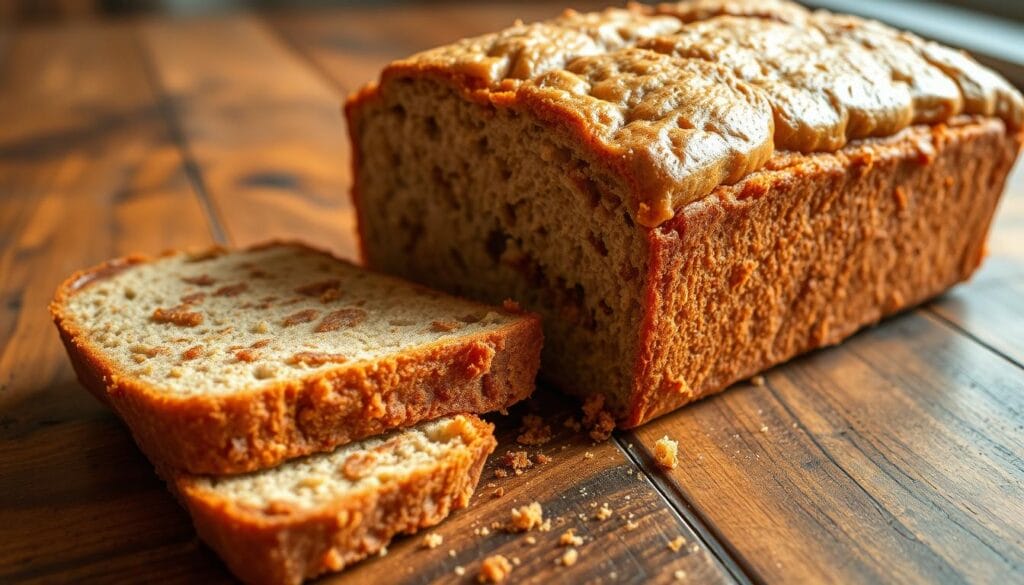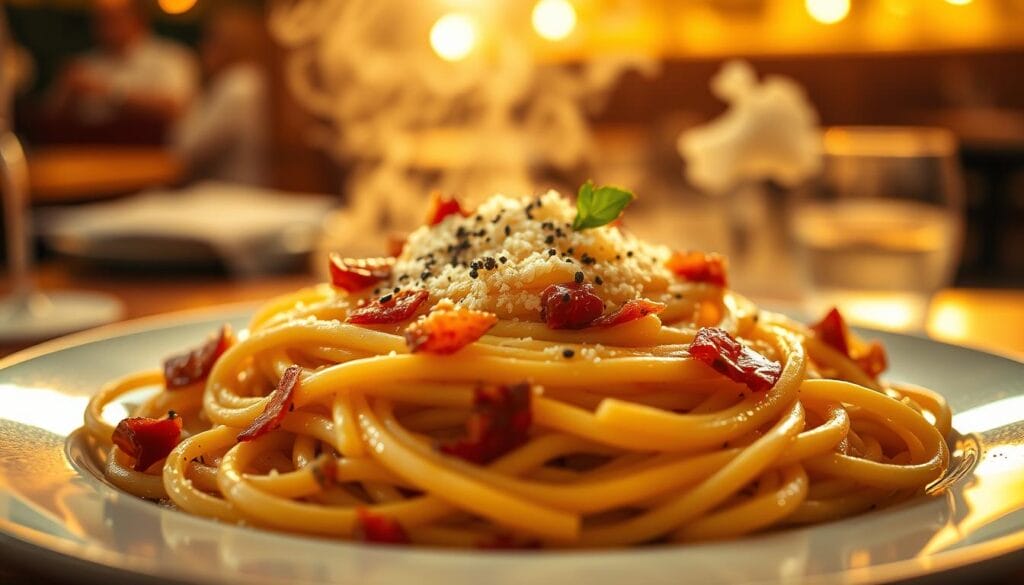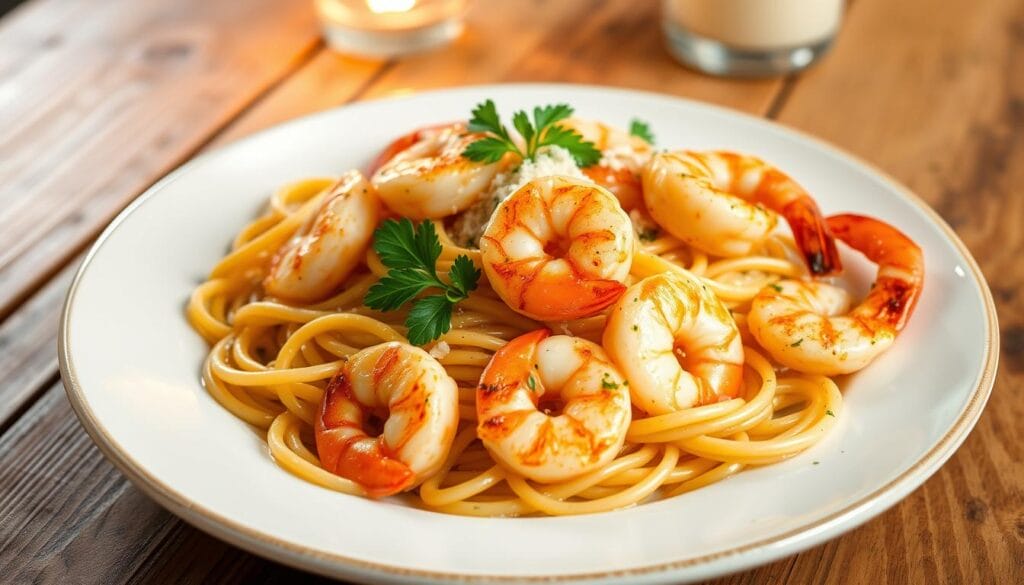A steaming bowl of New England Chowder is really something special. It combines the sweet taste of clams with creamy broth. My family often had this chowder in the cold New England winters. It was our top comfort food, bringing memories and warmth.

I really enjoy the simple yet rich taste of New England chowder. Every bite mixes clams, bacon, and potatoes in a thick broth. Old Bay seasoning lifts its flavor, making it too good to resist. A touch of butter adds richness. Topping it with fresh parsley and serving it with crackers or bread captures New England’s spirit.
Preparing this chowder reminds me of its big role in both fancy and simple settings. It feels great sharing it by the sea or at home. “So delicious. My family and friends loved this. I made it twice in one week because I loved it so much,” Asober comments. Clearly, it’s a meal that unites folks, filling us with joy and making us look forward to more.
The History of New England Chowder
New England chowder’s story began in the 18th century. British, French, and Nova Scotian immigrants brought it to the U.S. It started as a simple fisherman’s meal, made from the day’s catch with vegetables and preserved meats. This nourishing dish soon became a favorite in coastal communities.

The chowder we adore today took shape after many changes. By the 1800s, Boston eateries often served the creamy seafood chowder. It had milk or cream, salt pork or bacon, and potatoes. Herman Melville even talked about it in his 1851 book, “Moby Dick,” as a tasty clam meal.
The chowder’s development shows how the region’s social and economic trends changed. Once thickened with crackers or stale bread, its creamy, flavorful broth is now iconic. The main parts are clams, potatoes, salt pork or bacon, and onions. Milk or cream makes it thick and white.
Other versions like Manhattan with tomatoes and Rhode Island with clear broth also came about. But the dairy-based New England style is unique. A famous twist is serving it in a sourdough bowl at San Francisco’s Fisherman’s Wharf. This highlights its lasting appeal and adaptability.
| Chowder Type | Base | Key Ingredients | Region |
|---|---|---|---|
| New England Chowder | Cream or Milk | Clams, Potatoes, Salt Pork/Bacon, Onions | Northeastern U.S. |
| Manhattan Chowder | Tomato | Clams, Tomatoes, Onions, Celery | Northeastern U.S. |
| Rhode Island Chowder | Clear Broth | Clams, Potatoes, Onions | Rhode Island |
Key Ingredients for an Authentic Chowder
Making a classic New England Chowder begins by knowing the essential chowder ingredients. The core of any excellent chowder is fresh clams. You should pick littleneck, cherrystone, or top neck clams for their tender yet bold flavor.

The seafood broth is also crucial, often made richer with clam juice. It lays the flavor groundwork, bringing out the chowder’s seafood taste. I opt for rendered bacon fat for extra flavor. This choice adds a smokier taste than traditional salt pork.
For texture and richness, go for red-skinned or Yukon Gold potatoes. But russets can work too, though they might fall apart. The mix of heavy cream and a butter-flour roux is key for that thick, creamy feel. This blend creates a smooth, rich base.
- Fresh littleneck clams (16)
- Canned chopped clams (3 cans, 6.5 ounces each)
- Clam juice (3 cups)
- Russet potatoes (1.5 pounds, peeled and cubed)
- Bacon (6 ounces, diced)
- Butter (2 tablespoons)
- All-purpose flour (5 tablespoons)
- Dry white wine (1/2 cup)
- Onion (1 large, diced)
- Celery (3 ribs, diced)
- Garlic (5 cloves, minced)
- Heavy cream (1.5 cups)
- Fresh thyme (2 sprigs) or dried thyme (2 teaspoons)
- Bay leaves (2 large)
- Flat-leaf Italian parsley (1/4 cup, minced)
- Salt and pepper (to taste)
Key herbs like fresh thyme, bay leaves, chives, and parsley add aromatic layers. Make sure to season well with black pepper for full flavor. You can thicken the chowder more with instant mashed potato flakes if needed.
Use these ingredients in the right amounts for true chowder flavor and creamy feel. When you cook with seafood, the freshness and quality of ingredients really matter.
My Personal Chowder Recipe
My journey with making seafood chowder starts with family traditions from Gloucester, Mass. This special version, passed down through generations, includes chopped clams, fried bacon, and simmered potatoes. It begins with onions and celery sautéed in bacon fat, with garlic to enhance flavor. The broth is then thickened with flour. Each bite brings a piece of my New England history, full of rich and savory flavors.

- 4 slices of thick cut bacon, diced into small pieces
- 3 cups clam juice or chicken broth
- 4 cans (6.5 oz each) chopped clams, liquid reserved
- 1 small onion, diced
- 3 stalks celery, diced
- 2 garlic cloves, minced
- 1/3 cup all-purpose flour
- 1 1/2 pounds red potatoes, diced into 1/2 inch pieces
- 1/4 teaspoon dried thyme
- 2 bay leaves
- 8 ounces heavy cream
- 2 tablespoons parsley, minced
- Salt and pepper to taste
- Optional substitutions: chicken broth for clam juice, extra potatoes, or omitting bacon
Personal cooking tips:
- Layer flavors: Start by cooking bacon or pancetta. Then, sauté onions, celery, and garlic in butter and the rendered fat.
- Thickening: Use flour to reach your desired thickness or simmer longer for a thicker chowder. Add extra stock for a thinner chowder.
- Add clams last: To avoid rubbery clams, add pre-cooked canned clams towards the end of cooking.
- Potatoes: Choose Russet potatoes to thicken the broth or Yukon Gold for firmer chunks.
This shortcut chowder recipe is quick, ready in just 45 minutes using pantry staples and canned clams. Enjoy it with saltine or oyster crackers for a true New England taste.
Enjoying Chowder: Serving and Storage Ideas
Serving chowder is an art that bumps up your meal. Try it with Parker House Rolls or Garlic Crostini. Oyster crackers or saltines are great for something lighter. A fresh Apple Walnut Salad or Cobb Salad also makes excellent sides for a hearty meal.
For a unique touch, serve your chowder in a bread bowl. It matches the sea theme and is tasty with the broth. Crusty bread also gives a great crunch with creamy chowder. Or, pair it with homemade French fries or Maple Brussels Sprouts for a filling meal.
Keeping chowder fresh is key. Store leftover seafood chowder in a tight container in the fridge for up to three days. Freezing it might ruin the texture since the cream can separate. To reheat, warm it slowly on the stove, stirring to stop it from sticking. Or, microwave it for 2-3 minutes. With these tips, every bowl of chowder will be as good as the first.
FAQ
What is New England Chowder?
It’s a creamy soup with clams, bacon, and potatoes. This soup is a favorite in New England. It’s known for its rich, creamy broth and delicious taste.
How did New England Chowder originate?
The chowder started as a fisherman’s meal, using the day’s catch. Vegetables and preserved meats were also added. The creamy version we love came about later.
What are the key ingredients for an authentic New England Seafood Chowder?
For real New England Chowder, you need fresh clams, potatoes, bacon or salt pork, and onions. Add celery, garlic, clam juice, heavy cream, and a flour-fat roux for thickness. Thyme and bay leaves add great flavor.
Can you share your personal chowder recipe?
Sure! I start by cooking onions and celery in bacon fat. Then I put in garlic. After that, I add flour, clam juice, potatoes, and heavy cream. It all simmers gently. Clams are added last.
My family in Gloucester, Mass., has perfected this recipe over many years.
How should New England Chowder be served?
Serve the chowder hot with crusty bread or saltine crackers. For something special, use a bread bowl. It’s great for quiet nights or big family meals.
How should leftover New England Chowder be stored?
Keep leftover chowder in the fridge in airtight containers for up to five days. You can freeze it, but the cream might separate. Warm it up well to enjoy its full flavor.



